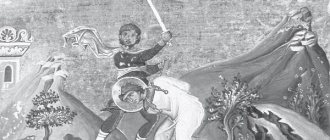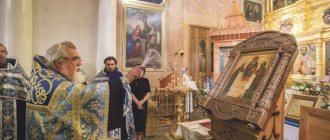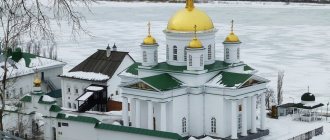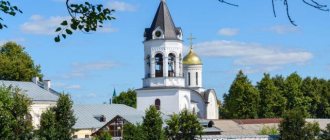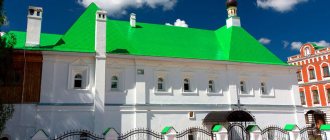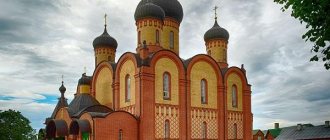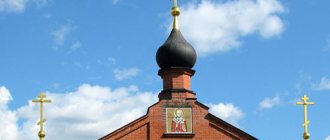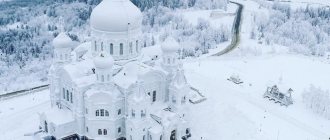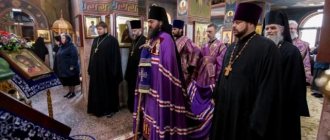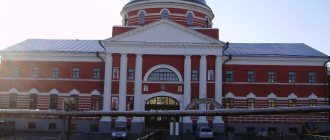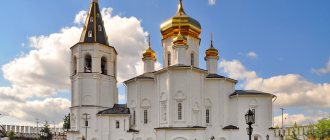Mir
Russia Murmansk region Trifonov Pechenga Monastery Map loading in progress...
{"format":"leaflet","minzoom":false,"maxzoom":false,"limit":50,"offset":0,"link":"all","sort":[""], "order":[],"headers":"show","mainlabel":"","intro":"","outro":"","searchlabel":"\u2026 \u0441\u043b\u0435\ u0434\u0443\u044e\u0449\u0438\u0435 \u0440\u0435\u0437\u0443\u043b\u044c\u0442\u0430\u0442\u044b","default":"","import-annotation":false,"width ":"auto","height":"350px","centre":{"text":"","title":"""link":"""lat":69.4259809999999930596459307707846164703369140625,"lon": 31.05849299999999857391230762004852294921875,"icon":""},"title":"","label":"","icon":"","lines":[],"polygons":[],"circles":[ ],"rectangles":[],"copycoords":false,"static":false,"zoom":8,"defzoom":14,"layers":["OpenStreetMap"],"image layers":[] ,"overlays":[],"resizable":false,"fullscreen":true,"scrollwheelzoom":true,"cluster":false,"clustermaxzoom":9,"clusterzoomonclick":true,"clustermaxradius":80, "clusterspiderfy":true,"geojson":"","clicktarget":"","showtitle":true,"hidenamespace":false,"template":"","userparam":"","activeicon": "","pagelabel":false,"ajaxcoordproperty":"","ajaxquery":"","locations":[{"text":"\u003Cb\u003E\u003Ca href=\"/palomnik/%D0% A2%D1%80%D0%B8%D1%84%D0%BE%D0%BD%D0%BE%D0%B2_%D0%9F%D0%B5%D1%87%D0%B5%D0%BD% D0%B3%D1%81%D0%BA%D0%B8%D0%B9_%D0%BC%D1%83%D0%B6%D1%81%D0%BA%D0%BE%D0%B9_%D0% BC%D0%BE%D0%BD%D0%B0%D1%81%D1%82%D1%8B%D1%80%D1%8C\» title=\»\u0422\u0440\u0438\u0444\u043e\ u043d\u043e\u0432 \u041f\u0435\u0447\u0435\u043d\u0433\u0441\u043a\u0438\u0439 \u043c\u0443\u0436\u0441\u043a\u043e\u0439 \u 043c\u043e\u043d\u0430\u0441\ u0442\u044b\u0440\u044c\»\u003E\u0422\u0440\u0438\u0444\u043e\u043d\u043e\u0432 \u041f\u0435\u0447\u0435\u043d\u0433\u0441\u 043a\u0438\u0439\u043c\ u0443\u0436\u0441\u043a\u043e\u0439 \u043c\u043e\u043d\u0430\u0441\u0442\u044b\u0440\u044c\u003C/a\u003E\u003C/b\u003E\u003Ch r /\u003E\u003Ca href= \"/palomnik/%D0%A1%D0%B2%D0%BE%D0%B9%D1%81%D1%82%D0%B2%D0%BE:%D0%90%D0%BD%D0%BD %D0%BE%D1%82%D0%B0%D1%86%D0%B8%D1%8F\" title=\"\u0421\u0432\u043e\u0439\u0441\u0442\u0432\u043e:\u0410\ u043d\u043d\u043e\u0442\u0430\u0446\u0438\u044f\»\u003E\u0410\u043d\u043d\u043e\u0442\u0430\u0446\u0438\u044f\u003C/a\u003E: \u0421\u0442\u0430 \u0440\u0435\u0439\u0448\u0438\u0439 \u043c\u043e\u043d\u0430\u0441\u0442\u044b\u0440\u044c \u043d\u0430 \u041a\u043e\u043b \u044c\u0441\u043a\u043e\u043c \u043f\u043e\u043b\u0443\u043e\u0441\u0442\u0440\u043e\u0432\u0435. \u0414\u043e\u043b\u0433\u043e\u0435 \u0432\u0440\u0435\u043c\u044f \u0431\u044b\u043b \u0441\u0430\u043c\u044b\u043c \u044 1\u0435\u0432\u0435\u0440\u043d \u044b\u043c \u043c\u043e\u043d\u0430\u0441\u0442\u044b\u0440\u0451\u043c \u043c\u0438\u0440\u0430","title":"\u0422\u0440\u0438\ u0444\u043e\ u043d\u043e\u0432 \u041f\u0435\u0447\u0435\u043d\u0433\u0441\u043a\u0438\u0439 \u043c\u0443\u0436\u0441\u043a\u043e\u0439 \u 043c\u043e\u043d\u0430\u0441\ u0442\u044b\u0440\u044c","link":"","lat":69.4259809999999930596459307707846164703369140625,"lon":31.058492999999998573912307620048522 94921875,"icon":""}],,"imageLayers":[]}
69.331618; 31.139623
Russia, Murmansk region, Pechenga municipal district, rural settlement of Korzunovo
Murmansk region
Russia
Telephone.:
8(815-54)7-62-23.
Email:
Holy Trinity Trifonov Pechenga Monastery
(sometimes
Pechenga-Troitsky-Trifon Monastery
, Finnish: Petsamon luostari or Trifon Petsamolaisen luostari) is a monastery of the Russian Orthodox Church in the village of Luostari, Pechenga district, Murmansk region. The oldest monastery on the Kola Peninsula. For a long time it was the northernmost monastery in the world.
History[[edit]h2>
Founded in 1533 by the Monk Tryphon of Pechenga, on the place where the Mana River (modern name Nama-Yoki) flows into Pechenga. In 1548, after Tryphon was forced to leave the monastery, the brethren voluntarily moved the monastery closer to the mouth of the Pechenga, to a place convenient for fishing and trade.
In December 1589, the monastery was attacked by a Finnish detachment, subjects of the Swedish king. The Finns killed everyone in the monastery, after which they burned the monastery. After this, the monastery was transferred to the territory of the Kola fort, to the Church of the Annunciation of the Blessed Virgin Mary.
After a fire in 1619, the monastery was again moved to a new location, across the Kola River. A cathedral church was built in the name of the holy apostles Peter and Paul. However, in 1765 the monastery was abolished by decree of Empress Catherine II.
Only in 1886, by decree of the Holy Synod, the monastery was restored at the mouth of the Pechenga, at the site of the death of the Pechenga martyrs.
After the October Revolution, at the end of 1920, the monastery was ruined. The monastic community of the monastery, evacuated to Finland during the Soviet-Finnish war, became part of the New Valaam Brotherhood, and the abbot, Abbot Paisiy (Ryabov), fell into the hands of the Soviet special services and was shot on December 12, 1940. On January 30, 1984, at the age of 110, the last of the Pechenga monks, Father Akaki, died.
The Holy Synod revives the Tryphon Monastery
The tsarist government at the end of the nineteenth century was very much inclined towards strengthening the Orthodox Church. Emperor Alexander III saw in it his reliable support and therefore, during his reign, a large number of monasteries and temples were revived.
In addition, universities increasingly began to abolish the study of natural sciences, and increasingly taught theology. It was believed that it was the enlightened students who became the main threat to the monarchy.
There was a grain of truth in this. For example, “Narodnaya Volya”, which committed a series of attempts on the life of Alexander II, for the most part consisted of female students.
1886
this year the Trifon Pechenga Monastery was revived
The Holy Synod decides to locate the monastery in its old location at the mouth of the Pechenga River. Where St. Tryphon was buried and the monks died at the hands of the Finns. The center of the monastery became the Church of the Presentation of the Lord.
The church building, built in 1707, had to be completely renovated, and ten years later a new church was built there. It was completely made of stone, and it had three altars: the Assumption of the Mother of God, the Presentation of the Lord, St. Zosima and Savathia.
Current state[[edit]h2>
The Russian Orthodox Church announced the resumption of the monastery's activities in 1997. The monastery houses the relics of 116 martyrs who died during the destruction of the monastery in 1589. There is a monastery in Murmansk (since 2008).
In November 2007, the authorities of the Pechenga district of the Murmansk region adopted a resolution on the transfer to the Trifonov-Pechenga monastery of lands that historically belonged to it in the area of the village of Luostari, where the grave of St. Trifon of Pechenga was located. In addition, the martyrs Jonah and Herman, the first to suffer from the sword of robbers during the destruction of the monastery in the 16th century, were buried there.
On December 1, 2007, there was a fire in the monastery. The main temple of the monastery completely burned down. It was decided to restore the monastery in the form it had at the beginning of the 20th century at its original location, in the village of Luostari, Pechenga district, Murmansk region.
By December 2012, the temple in honor of the Life-Giving Trinity was consecrated. By this time, almost all the buildings had been rebuilt.
Currently, about 10 people live in the monastery (3 of them are monastics).
In the 16th century, Finnish robbers attacked the monastery and killed 116 monks and novices.
In addition to directly seizing territory, the Swedes often carried out raids by dashing people. Most often Finns or other local peoples.
This happened on the eve of the Nativity of Christ in 1590, when, under the leadership of the Finnish leader Pekka Vessainen, a detachment of robbers attacked the northernmost monastery of Rus'.
The modern monastery houses the relics of all 116 martyrs.
The Holy Trinity Trifonov Pechenga Monastery was located in a convenient location at the mouth of the Pechenga, a small northern river. The fortifications of the monastery were built with an eye to sudden attacks by small gangs and were not prepared to repel a serious threat.
Moreover, the entire wall consisted of logs and not even a small earthen rampart was erected there. Therefore, the robbers were easily able to get close to the monastery at night, quickly captured the gates and began to kill the monks.
In total, on that fateful night the Finns killed 116 monks and novices, later called the 116 martyrs. The monastery itself was plundered and burned to the ground.
Later, the Trifonov Monastery was restored and those few monks who managed to escape from the hands of the raiders moved there. However, the monastery was plundered more than once; at the end of the eighteenth century it was closed, and during the wars of the twentieth century the monastery found itself at the center of hostilities.
Now the monastery has been restored again, a new Trinity Church has been built, and the monastery is gradually filled with new monks and novices.
Venerable Tryphon, founder of the Tryphon-Pechenga Monastery
How to get there[[edit]h2>
Directions:
from Murmansk
from the bus station
by regular bus Murmansk-Nickel to the village of Pechenga (you must have a Russian passport to enter the border zone). There is no hotel; guests must decide on their own accommodation and meals.
From the railway station
— bus Murmansk-Nickel, Murmansk-Zapolyarny, turn to the village. Luostari, ost. “31st kilometer”, then 1.5 km. on foot or by passing transport towards the village. Luostari.
Automobile.
Highway M-18 (E105) SP-B-state border to 1531, then turn left to the village. Luostari.
Address:
184411, Murmansk region, Pechenga village, Pechenga highway, 1.
Tel.:
8(815-54)7-62-23.
Email:
Official site
Information for employees[[edit]h2>
The Holy Trinity Trifonov Pechenga Monastery accepts any fraternal help for any period of time.
Any adult male who is not wanted for civil or criminal proceedings, has Russian citizenship, and does not have diseases that could prevent him from staying in the monastery can become a worker.
You MUST first contact and agree with the RECENTER on the date of arrival, the number of people, and the approximate length of stay in the monastery.
Persons who arrive suddenly, without prior approval from the monastery MANAGEMENT, may be refused admission, since accommodation options are very limited.
We provide accommodation and food for persons accepted into the monastery as workers.
In order to stay in the monastery, it is necessary to strictly follow the internal rules of the monastery, unquestioningly fulfill all the blessings of the monastery hierarchy, daily (unless otherwise determined by obedience) attend common meals and prayers, at divine services, regularly confess, take communion, conscientiously fulfill obediences, preferably not smoke, do not drink alcohol, do not have other harmful inclinations, do not have conflicts with anyone, do not have debts in the world, both family (minor children, sick or indigent immediate relatives), and financial or contractual to the state or other organizations and by private individuals.
About the life of St. Tryphon of Pechenga: myths, facts and guesses
Many nights Mitrofan dreamed of strange people, covered from head to toe with animal skins. They stood at a distance, talked in an incomprehensible language, and then looked in his direction for a long time - either with caution and distrust, or with hope. Why did Mitrofan still feel uneasy for a long time after waking up? And then his thoughts darkened even more. Again and again the bloody scenes of which he was the culprit were recalled, and Mitrofan began to be eaten away by remorse. His conscience tormented him so much during the day that the eccentric guests of his nightmares seemed like salvation. He thought a lot, asked travelers and fishermen, and one day, abandoning worldly pleasures and putting on a metal belt, Mitrofan left forever for the cold northern lands. To seek the salvation of the soul and those strange people who were popularly called Lapps.
Mitrofan - bloody chieftain
No authentic information about the life of St. Tryphon of Pechenga has been preserved; all eyewitness accounts of his life and deeds were destroyed back in the 16th century, along with the monastery that he built on Murmansk land. Two centuries later, when the image of the bloody chieftain Mitrofan was almost completely erased from history, the life of Saint Tryphon was written, in which there was almost no truth left about his violent youth and the true reason for his transfiguration.
Ataman Mitrofan
Mitrofan - the future Saint Tryphon - was born in June 1495, in Torzhok, into the family of a priest, but did not follow in the footsteps of his parent. Since childhood, he had excellent health, tall stature and incredible strength. Therefore, in his early youth he joined the army. It is unknown what exactly did not suit Mitrofan in military service. If we calculate mathematically some of the events of his life, it turns out that by the age of 17, he became famous as the chieftain of a cruel band of robbers who kept “all the settlements right up to the shores of the Gulf of Bothnia” at bay. Mitrofan had a very unrestrained character and, in any case, grabbed a weapon. They say that in a fit of anger he even killed his own beloved. That same year, the fierce chieftain abandoned his wild life and went north to find salvation or death.
After long wanderings and many hardships, fate or God's providence brought Mitrofan to the banks of the Pechenga River. And he finally saw those very people from his dreams.
Mitrofan - protector of the Lapps
The Lapp people were historically nomadic: people followed deer, cared for them, and set up their simple dwellings near pastures. Therefore, the Lapps had neither statehood nor an army, that is, no protection from the endless attempts of various kinds of foreigners to rob or kill them. Therefore, they were more than wary when a tall stranger came to their lands.
The Lapp sorcerers cursed Mitrofan in every possible way, and he was severely beaten more than once. But in response he showed only deep humility and continued to talk about peace, repentance, forgiveness and love.
Saint Tryphon among the Lapps
To convey his words fully, Mitrofan studied the Lapp dialect for five years, and also protected the local residents from any raids. As a result, a rumor spread that the Lapps had their own hero, and they stopped making attempts on their lives. And the Lapps, for their part, fell in love with the strange, humble giant and increasingly listened to his sermons.
Mitrofan - the future Tryphon
After 17 years in the Murmansk lands, Mitrofan again set out on a long journey. He went to the Archbishop of Novgorod Macarius to repent of the sins of his youth before the priest and ask permission to build a church for the Lapps, in the place where the Pechenga flows into the Barents Sea.
The Archbishop allowed Mitrofan to begin building a church on Murmansk land, to continue his sermons for the Lapps and to prepare them for baptism.
However, penance - a type of church moral and correctional punishment - at that time was supposed to be 20 years.
Therefore, Mitrofan was promised that exactly three years later the famous monk Elijah would appear to him and bring sacred texts and necessary utensils for the church.
Three years later, the built church was consecrated in honor of the Holy Trinity, and Mitrofan was tonsured a monk with the name Tryphon. Then all willing Lapps were baptized. There were quite a few of them, so great was their love for the protector and patron who brought peace and tranquility to their land. In 1532, the Holy Trinity Pechenga Monastery was founded here, the history of which was also not simple.
Tryphon - the builder of the monastery
The construction of a new monastery required money, so Tryphon and several brothers embarked on an eight-year wandering to collect mercy and send it for construction needs. As a result of their wanderings, the monks ended up in Moscow with Tsar Ivan the Terrible with a petition.
Tryphon told the king about distant lands, about Lapps, about reindeer herds, about schools of fish and the need to spread the Orthodox faith to the north. Ivan the Terrible granted the humble priest a charter endowing the monastery with lands, gold and various privileges.
In 1556, Tryphon returned to his native monastery with the new abbot and personally took part in the construction work, including carrying heavy logs on his heroic shoulders for several miles. It was a fertile time for the Trifonov Monastery. Construction was underway not only of the monastery, but also of several other churches on the Kola Peninsula, and the love of the local population for their mentor grew every year.
Mitrofan or Trifon lived on the Kola Peninsula for 71 years. He was called both the Apostle of the Lapps and the Kola Baptist. It was here that he found agreement with himself and gave peace to an entire people.
The death of Saint Tryphon and his terrible prophecy
The Monk Tryphon died in December 1583, in his monastery, and just before his death he left the brethren a great and formidable prophecy: “There will be a grave temptation on this monastery, and many will suffer torment at the edge of the sword. But do not weaken, brothers, in your trust in God. He will not leave the rod of sinners in His lot, for He is strong, and He will again renew His abode.”
The prophecy came true seven years later.
